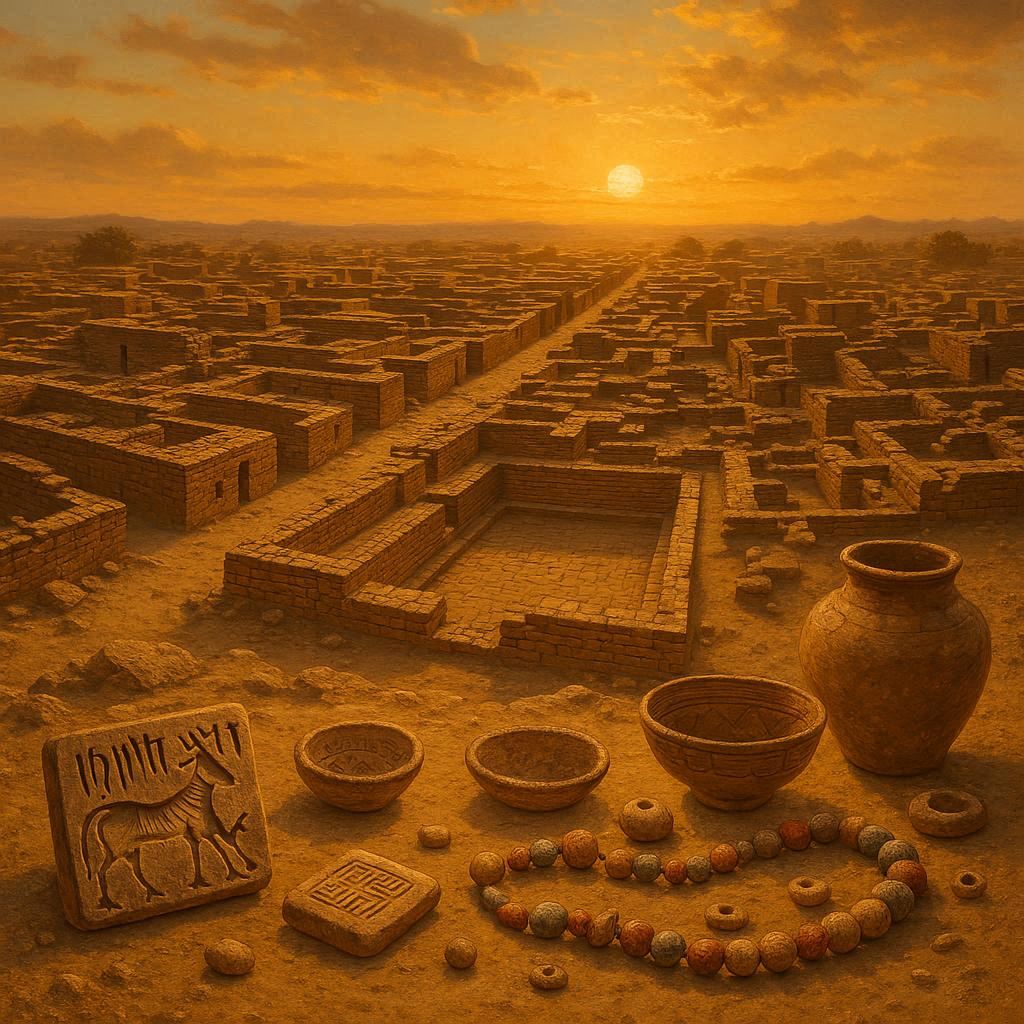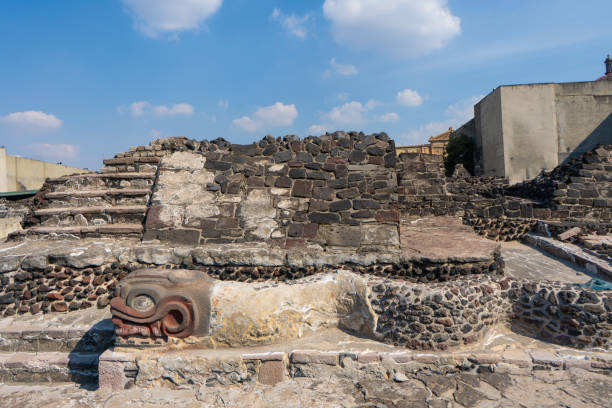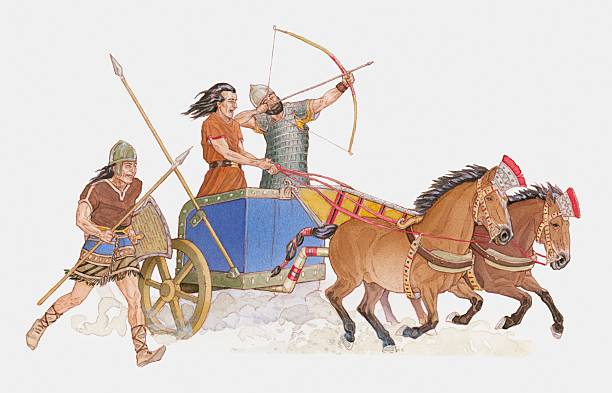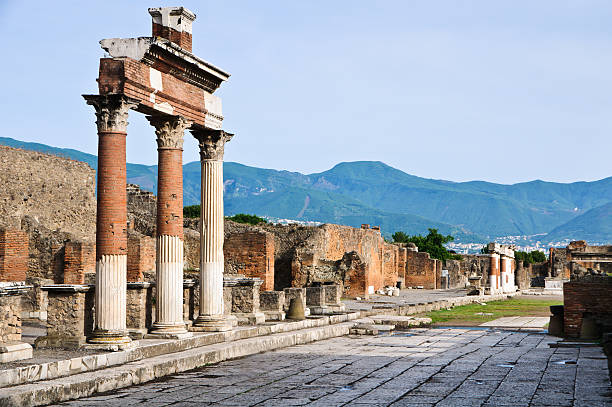Long before the pyramids of Egypt reached for the skies and centuries before the great philosophers of Greece began their debates, a remarkable civilization flourished along the banks of the mighty Indus River. This was the Indus Valley Civilization, also known as the Harappan Civilization—one of the world’s earliest cradles of urban life. Between roughly 2600 BCE and 1900 BCE, its people built cities so advanced in planning, so sophisticated in technology, and so mysterious in their legacy that even today, thousands of years later, they remain a puzzle that captivates historians, archaeologists, and dreamers alike.
Unlike the civilizations of Mesopotamia and Egypt, the Indus people left behind no deciphered texts to tell us their story. What we know of them comes not from written chronicles of kings or battles but from the silent ruins of their cities, the baked bricks of their houses, the patterns of their streets, and the enigmatic seals etched with symbols no one has yet fully understood. Their world feels like a whisper carried across millennia—fragments of lives that remain tantalizingly out of reach, yet powerful enough to remind us that human ingenuity was thriving in South Asia at a time when much of the world was still in its infancy.
The Indus Valley Civilization is a lost world not because it has vanished completely, but because its voice remains silent. We know the shape of its cities, the breadth of its trade, and the beauty of its craftsmanship, but its thoughts, myths, and inner truths remain locked in undeciphered symbols. It is this silence, combined with the sheer brilliance of their achievements, that makes the Indus people one of history’s greatest enigmas.
Discovering a Civilization Hidden in the Earth
For centuries, the ruins of the Indus Civilization lay hidden beneath fields and villages of modern South Asia, mistaken for nothing more than ancient mounds of earth. Local people occasionally dug up old bricks, using them to build houses or roads, not realizing that these bricks once formed part of one of the greatest urban networks in the ancient world.
It was only in the 1920s that archaeologists, while working along the railways in what is today Pakistan, stumbled upon the remains of a vast city at Harappa. Soon after, another great site, Mohenjo-Daro, was revealed. What they uncovered stunned the scholarly world: streets laid out in perfect grids, drainage systems more advanced than those of many modern cities, multi-story houses, granaries, and evidence of trade networks stretching thousands of miles.
The discovery rewrote history. Until then, scholars had assumed that civilization in South Asia began with the arrival of Indo-European peoples around 1500 BCE. But here was proof of a homegrown civilization, thriving centuries earlier, with achievements rivaling those of Mesopotamia and Egypt. Suddenly, the Indus Valley was recognized as one of the great cradles of civilization, a forgotten partner in humanity’s earliest experiments with city life.
Cities of Order and Innovation
The most striking feature of the Indus Valley Civilization is its urban planning. Unlike many ancient cities that grew haphazardly, Harappan cities were built according to precise layouts, suggesting centralized planning and governance. Streets were arranged in a grid system, intersecting at right angles, with main thoroughfares flanked by smaller lanes. Houses were often two stories high, made of standardized baked bricks, and equipped with private wells and bathrooms.
The drainage system was nothing short of revolutionary. Covered sewers ran beneath the streets, carrying wastewater away from homes—a level of sanitation that would not be seen again in many parts of the world until the 19th century. Each house connected to this system, showing that concern for cleanliness and public health was deeply ingrained in Harappan society.
Large public structures, such as the Great Bath at Mohenjo-Daro, hint at communal or ritual practices, though their exact purpose remains debated. Granaries suggest centralized storage and distribution of food, pointing to complex economic organization. The uniformity of brick sizes across cities indicates shared standards and possibly a unified political or cultural authority.
Walking through the ruins today, one can still feel the presence of order and intention. These were not chaotic settlements but carefully designed spaces where thousands of people lived in harmony, their lives structured by a system that valued balance, cleanliness, and functionality.
The Silent Script
Among the most tantalizing mysteries of the Indus Valley Civilization is its writing system. Hundreds of small seals, tablets, and pottery fragments have been discovered, inscribed with short sequences of symbols—sometimes accompanied by depictions of animals, such as the iconic “unicorn” motif.
This script, however, remains undeciphered. Unlike Egyptian hieroglyphs, which yielded their secrets with the discovery of the Rosetta Stone, no bilingual text has yet been found to unlock the Indus language. Scholars debate whether the script represents a full language or a proto-writing system used for economic or ritual purposes.
Because of this silence, we know little about Harappan politics, religion, or daily life beyond what can be inferred from material remains. Did they have kings, councils, or priestly rulers? Did they worship gods similar to later Hindu deities, as some have suggested? What myths shaped their worldview? Without access to their words, we can only speculate.
And yet, the mystery adds to their allure. The undeciphered script stands as a symbol of a lost voice, a reminder that even in our age of technology, there remain profound gaps in our knowledge of the human story.
Masters of Trade and Craft
The Indus Valley Civilization was not isolated. Evidence shows that Harappan merchants traded extensively, both within South Asia and beyond. Seals bearing Indus symbols have been found in Mesopotamia, suggesting contact and exchange between these two great civilizations. Harappan beads, shells, and pottery traveled far, while in return they imported goods like lapis lazuli from Afghanistan, copper from Oman, and tin from distant lands.
Their crafts were exquisite. Bead-making workshops produced delicate ornaments from carnelian, agate, and faience. Metalworkers created tools and jewelry, while potters shaped vessels decorated with elegant motifs. Standardized weights and measures facilitated trade, another sign of an organized economy.
The Harappans were also skilled in agriculture. They grew wheat, barley, peas, and sesame, and evidence suggests they may have been among the first to cultivate cotton, which they likely wove into textiles. The fertile plains of the Indus, nourished by its seasonal floods, provided the agricultural surplus that supported their great cities.
A Civilization Without Kings?
One of the most intriguing aspects of the Indus Valley Civilization is the absence of clear evidence for kings, palaces, or large-scale warfare. Unlike Mesopotamia, where inscriptions celebrate the exploits of rulers, or Egypt, where pharaohs built colossal monuments, the Indus world leaves no such traces.
Some scholars suggest that power in Harappan society may have been more decentralized, perhaps managed by councils or local leaders rather than monarchs. The uniformity across cities hints at shared governance, but whether this was achieved through consensus, trade networks, or religious authority remains unknown.
This apparent lack of hierarchy challenges assumptions about how complex societies function. It suggests that large, prosperous urban civilizations need not be built upon conquest or the rule of kings. Instead, the Indus people may have pioneered a different model of organization—one that valued order, cooperation, and balance over displays of dominance.
The Mystery of Their Religion
Religion often defines civilizations, but the faith of the Indus Valley people is another enigma. Archaeologists have uncovered terracotta figurines, often interpreted as representations of mother goddesses, suggesting fertility cults. Other seals show horned figures seated in poses reminiscent of yogic postures, which some scholars link to later Hindu concepts of Shiva.
Sacred animals seem to have played a role in their beliefs. Bulls, elephants, and the mysterious “unicorn” appear frequently in Harappan art. The Great Bath at Mohenjo-Daro hints at ritual purification practices, perhaps precursors to later traditions of sacred bathing in South Asia.
But without written texts, we cannot know for certain. Were these gods and rituals ancestors of later Hindu practices, or entirely separate traditions now lost to time? The silence of the Indus script leaves us with tantalizing fragments of a spiritual world that must have been rich and deeply meaningful to its people.
The Great Decline
Around 1900 BCE, the great cities of the Indus Valley began to fade. Urban centers were gradually abandoned, trade networks collapsed, and the uniformity that once characterized the civilization dissolved into regional variations. By 1300 BCE, the Indus world as a coherent civilization had disappeared, leaving behind only scattered villages and memories buried in the earth.
Why did this happen? Scholars have long debated the causes of the Harappan decline. Climate change is a leading theory: shifts in monsoon patterns and the drying of the Saraswati River may have reduced agricultural productivity, making it difficult to support large urban populations. Earthquakes and floods could have disrupted cities and trade routes.
Another possibility is social and economic transformation. As trade with Mesopotamia declined, the foundations of the Harappan economy may have weakened. Internal shifts in population and resources could have eroded the cohesion that held the civilization together.
For a time, some scholars believed the decline was linked to invasions by Indo-European groups known as Aryans. But modern evidence suggests that the fall of the Indus was not the result of conquest but rather a slow unraveling under environmental and social pressures.
The Harappan people did not vanish entirely. Their descendants likely merged with incoming populations, and aspects of their culture may have lived on in later South Asian traditions. But the great cities, the grids of brick and the shining seals, became silent, swallowed by time until rediscovery in the 20th century.
Echoes of the Indus in the Modern World
Though the Indus Valley Civilization disappeared thousands of years ago, its echoes remain in South Asia today. The region’s continued emphasis on urban order, sanitation, and water management may reflect deep cultural roots stretching back to Harappan innovations. Symbols and motifs found in later Indian traditions bear resemblance to those seen in Harappan art, suggesting threads of continuity.
Even the mystery of their script has become part of modern identity. In both India and Pakistan, the Harappan legacy is celebrated as a symbol of ancient greatness, a reminder that the subcontinent was home to one of the world’s first great civilizations. The ruins of Mohenjo-Daro and Harappa stand not only as archaeological sites but as touchstones of cultural pride and heritage.
Lessons from a Lost Civilization
The Indus Valley Civilization offers lessons that are as relevant today as they were thousands of years ago. It shows us that human societies can thrive with balance, order, and cooperation rather than conquest and hierarchy. It reminds us of the fragility of civilization in the face of environmental change, a warning echoed in our current age of climate crisis.
It also demonstrates the limits of our knowledge. For all our technology and scholarship, there remain mysteries we cannot yet solve. The undeciphered script of the Harappans is a humbling reminder that history is vast, and that human creativity often outpaces our ability to fully comprehend it.
Most of all, the Indus Valley Civilization reminds us that the human story is not a straight line of progress but a complex tapestry of achievements, collapses, and rediscoveries. The Harappans may be silent, but their cities, their crafts, and their innovations speak volumes. They challenge us to look deeper, to listen harder, and to honor the voices of civilizations that time has tried to erase.
The Timeless Allure of the Indus Valley
Standing amid the ruins of Mohenjo-Daro, gazing down streets that were once alive with merchants, artisans, and children, one cannot help but feel a connection across the millennia. These people lived, dreamed, and struggled much as we do today. They built homes, raised families, worshiped, traded, and adapted to the challenges of their time.
Though their words are lost, their legacy endures in every brick, every seal, every fragment of pottery unearthed from the soil. The Indus Valley Civilization remains one of humanity’s most haunting enigmas: a world advanced, ordered, and yet shrouded in silence. Its story is not one of failure but of resilience, innovation, and the enduring mystery of human creativity.
The Indus people remind us that history is never complete. There are always new questions to ask, new clues to uncover, and new stories waiting to emerge from the earth. And as long as their script remains unread, their civilization will continue to beckon us—a riddle carved into stone, an invitation to remember, and a call to wonder at the brilliance of a lost world.






